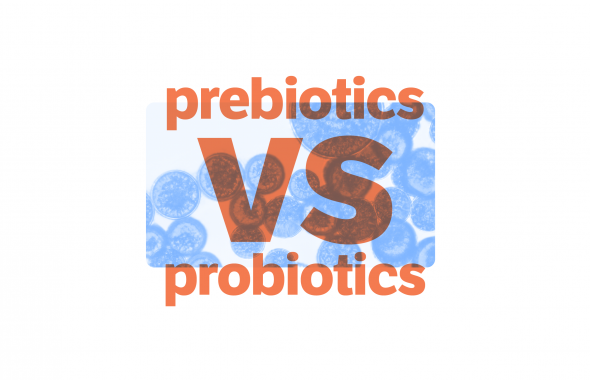by John Kelly, Senior Research Editor at Dictionary.com
It’s easy to confuse disinfectants and antiseptics. They have a lot in common, after all. Both are chemical agents used to reduce the risk of infection from germs and help stop the spread of disease.
But, disinfectants and antiseptics also have differences in their use—differences that can be critical to your health and safety. Here’s the key takeaway:
- Disinfectants are primarily applied to non-living surfaces, such as for cleaning your countertops or tubs. Do not put disinfectants in or on your body. They can kill you. When using disinfectants, follow the label directions.
- Antiseptics are applied to living tissues, often to the skin in the form of hand rubs or washes. Sometimes antiseptics are called skin disinfectants.
And, as you might already be wondering, how do disinfectants and antiseptics differ from antibiotics? An antibiotic is a chemical substance taken as a medicine to stop or kill specific bacteria or other microorganisms—but not viruses—that cause infectious diseases in the body.
Now that we’ve gotten a glimpse of the big picture, let’s zoom in for more detail, why don’t we? Whether you consider yourself a neat freak and germaphobe or you haven’t seen your bedroom floor underneath all the castaway clothes for weeks, we think we could all “tidy up” the differences between disinfectants and antiseptics.
What does antiseptic mean?
Many of us can quickly decode the word disinfectant. It’s something that disinfects, that is, “cleanses of infection” or “destroys disease germs.” Disinfectant can be both a noun, referring to a chemical agent that disinfects, or adjective, describing something that serves as one (e.g., disinfectant wipes).
Less familiar is antiseptic. Antiseptic has several meanings, and can also be used as an adjective (e.g., an antiseptic product) or noun (e.g., using topical antiseptics). For our purposes here, we are concerned with our primary definition: “pertaining to or affecting antisepsis, or destroying microorganisms that invade the body and cause disease.”
Let’s break down the word antiseptic a little more. Antiseptic combines anti-, “against,” and septic. Septic means “infected with bacteria or other microorganisms.” Septic is the adjective form of sepsis, “local or generalized invasion of the body by pathogenic microorganisms or their toxins.”
You may have heard of people—but we hope you’ve never had to personally experience—going to the hospital for sepsis, which is a severe infection that commonly affects older people.
What do disinfectants and antiseptics have in common?
As noted, disinfectants and antiseptics have a lot in common in terms of what they do and are made of.
First, both disinfectants and antiseptics are chemical agents that kill or stop the growth of microorganisms, including bacteria, viruses, and fungi. Because they destroy microorganisms, both disinfectants and antiseptics can also be called antimicrobials.
Antimicrobial substances that kill bacteria are specifically called antibacterials. Antimicrobial substances that kill viruses are specifically referred to as antivirals.
Antibiotics, again, are chemicals taken as medicines to destroy bacteria that cause infectious diseases; antibiotics do not work against viruses.
Learn more about antibiotics in our article, “Antibiotic” vs. “Abiotic” vs. “Antibody”: What Is The Difference?
Also, both disinfectant and antiseptic products are commonly made with alcohols, iodine, chlorine, and hydrogen peroxide, among many other substances.
Disinfectants vs. antiseptics: what are the differences?
Many of us are most familiar with disinfectants in the form of various brand-name household cleaning products, such as Clorox bleach or Lysol spray. Disinfectants are widely used in other settings—not least of which are public facilities and medical offices.
Cleaning vs. sanitizing vs. disinfecting
When using these products, words like clean, sanitize, and disinfect often get used interchangeably in everyday settings. And indeed, they can have overlapping senses.
But, cleaning generally implies scrubbing something with soap and water, as to remove dirt and grease. Sanitizing and disinfecting indicate a use of special chemicals to get rid of germs. To disinfect a surface, you usually need to leave it thoroughly wet with a disinfectant for several minutes—and often even longer than you would just to sanitize.
The CDC makes even more precise distinctions between these words. We think they are worth quoting in full, because infectious diseases like the flu and COVID-19 can spread on the many hard surfaces we interact with in our day-to-day lives, from doorknobs to phone cases to handrails:
Cleaning removes germs, dirt, and impurities from surfaces or objects. Cleaning works by using soap (or detergent) and water to physically remove germs from surfaces. This process does not necessarily kill germs, but by removing them, it lowers their numbers and the risk of spreading infection.
Disinfecting kills germs on surfaces or objects. Disinfecting works by using chemicals to kill germs on surfaces or objects. This process does not necessarily clean dirty surfaces or remove germs, but by killing germs on a surface after cleaning, it can further lower the risk of spreading infection.
Sanitizing lowers the number of germs on surfaces or objects to a safe level, as judged by public health standards or requirements. This process works by either cleaning or disinfecting surfaces or objects to lower the risk of spreading infection.
Then there’s sterilizing, a form of sanitizing. Sterilize means “to destroy microorganisms in or on, usually by bringing to a high temperature with steam, dry heat, or boiling liquid.”
What are antiseptic products?
Antiseptics are commonly used in medical and healthcare settings. Surgeons, for instance, scrub themselves with antiseptics before operating. Various healthcare workers wash their hands with antiseptics in hospitals.
Above, we noted that some disinfectants contain hydrogen peroxide. But that bottle of hydrogen peroxide in your medicine cabinet—the one that you have to break out every now and again with the cotton balls to clean, say, a minor cut? That is a solution of hydrogen peroxide and is used as an antiseptic.
Other everyday products containing antiseptic agents include certain mouthwashes and throat lozenges, substances for treating wounds and burns—and yes, antibacterial soaps and hand sanitizers.
For health, safety, and medical emergencies or updates on the novel coronavirus pandemic, please visit the CDC (Centers for Disease Control and Prevention) and WHO (World Health Organization). For more words related to the coronavirus, see our glossary and our dictionary updates. And for more important distinctions between confusing words related to the coronavirus, see our articles pandemic vs. epidemic, quarantine vs. isolation, virus vs. bacteria, contagious vs. infectious, and more.
Remember: most health professionals, including experts at the FDA and CDC, generally advise you to wash your hands using plain soap and water for at least 20 seconds!










